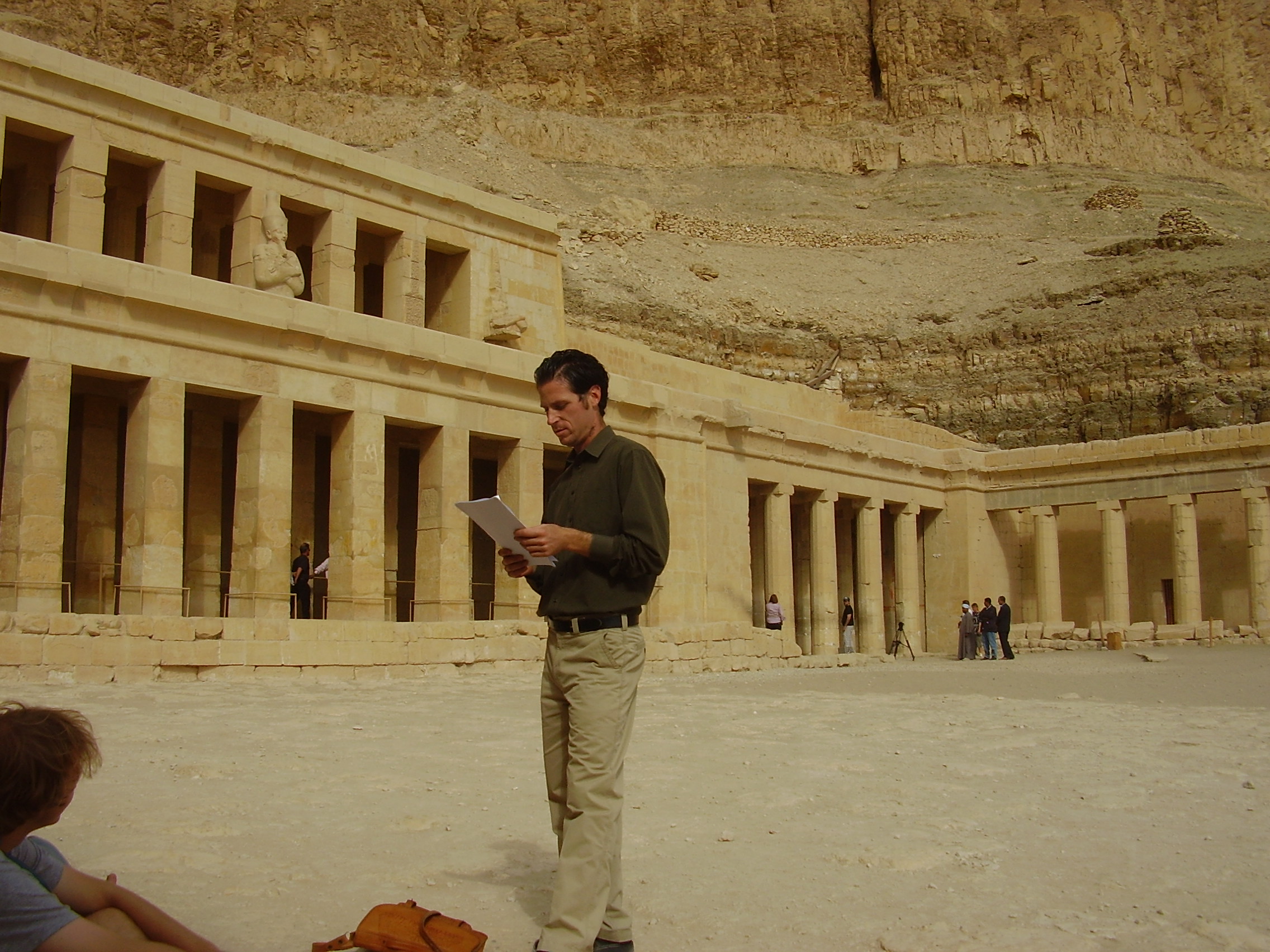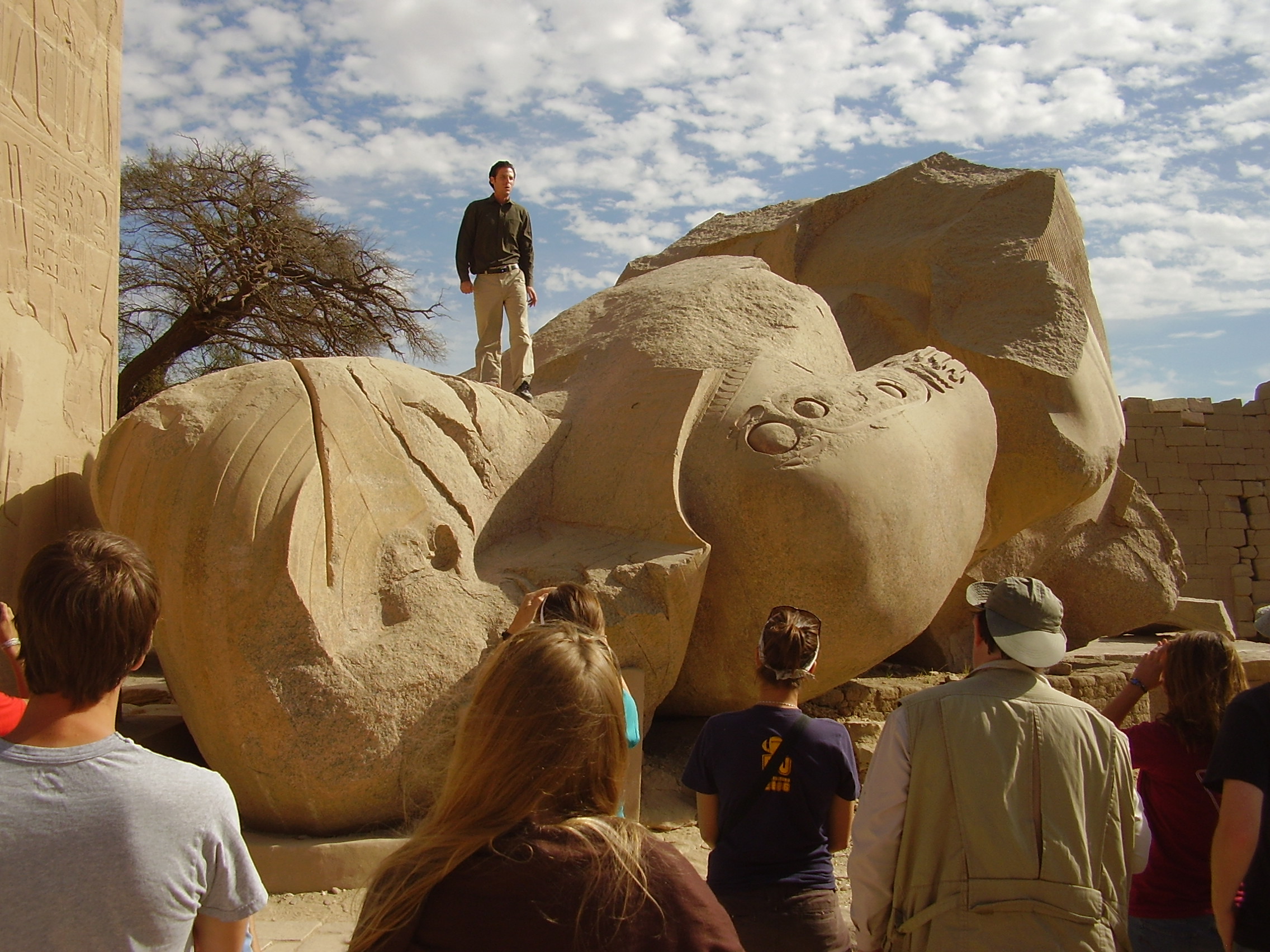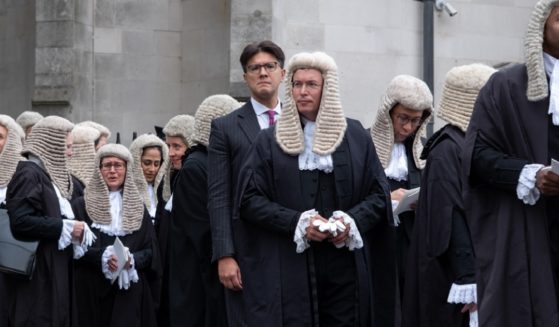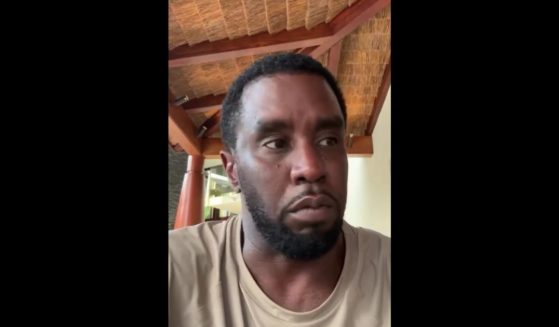Bible Proof: 'Tsunami' of Recent Archaeological Finds Confirms 'Accuracy of Scripture,' Expert Says
Biblical archaeology is something of an orphan among the field’s branches and is certainly its least advertised one. Confirming Bible truths, intentionally or accidentally, is not a favorite goal of scientists.
Agnostics, atheists and the downright anti-religious among them discount the work almost entirely, which is one reason why those who actually are attracted to the field typically mute their enthusiasm and downplay their work.
Even devout Christians mostly see biblical archaeology as mildly reassuring but largely unnecessary because they rightly believe the Bible is the self-authenticating Word of God.
Nevertheless, “There is a Tsunami of evidence confirming the Bible,” theologian Tom Meyer told The Western Journal in a video interview. Despite an enthusiasm for the topic that led to his recent book “Archaeology and the Bible: 50 Fascinating Facts That Bring The Bible to Life,” he places himself squarely and unequivocally in the camp of the truly faithful for whom “Your word is truth” (John 17:17).
“Scripture is authoritative. We don’t need archaeology to prove it’s true,” Meyer emphasized. “I’m a maximalist. I mean, I read the text. … I believe it. It really happened. It’s true. We don’t need archaeology for the Bible.”
Still, Meyer acknowledged that biblical archaeology provides a mighty pushback on the anti-religious who too often hog the microphone to claim the Bible lacks authority. The aim of his book, Meyer explained in its introduction, is “not only to praise God that His Word is truth, as wonderfully demonstrated by archaeology, but to equip you, your kids, and your grandkids with the truth you need to defend the faith.”
Additionally, Meyer agreed that Bible-confirming discoveries can provide a valuable context for those who are exploring the faith or new to it. Biblical archaeology “overwhelmingly points to the reliability in the accuracy of Scripture,” Meyer said, so it can have a profound impact.
Something of a similar nature happened to Meyer when he first visited the Holy Land during his undergraduate studies at Shasta Bible College. Although he was already a devout Christian, he recalled, “It forever changed how I understand and appreciate the land of the Bible and the Word of God.”

So much so, in fact, that he ultimately remained for 1,000 days, earning two masters degrees at Jerusalem University. That’s saying a lot for a man who had already memorized 20 books of the Bible, which he can still recite, word for word, and often does, as “The Bible Memory Man,” before amazed congregations throughout the nation.

“The Bible is meant more for the ears than the eyes,” Meyer said. “Compare it to reading Mozart versus hearing Mozart. You could read notes on the page all day long and say that’s nice. But to hear it, takes on a whole different form. To hear someone who has memorized [the Bible] and believes it, takes on a whole different form.”
More importantly, it was during Meyer’s trip to the Holy Land that he was astonished to learn about so many archaeological discoveries that confirm the existence of “between 50 to 100 people who are mentioned in the Bible,” he said. “We have that person’s name written on something. … Some of them are like scrubs on the basketball team right there on the bench. These guys are barely mentioned. Yet we have their names.”
These finds include the Egyptian execration (curse) texts representing the first extra-biblical mention of Jerusalem; the Merneptah Stele, which is the first extra-biblical mention of Israel; the Masada inscription bearing the name King Herod; and the Mesha clay stele, which is the first extra-biblical source that identifies Israelite King Omri, as well as individual stone seals that directly identify the strongman Samson, Queen Jezebel, the prophet Isaiah and Jerusalem’s King Hezekiah.
Such finds are nothing short of miraculous given that most are small objects or remnants buried by the literal sands of the desert and the figurative sands of time. While the ruins of cities, buildings, walls and other important structures have confirmed many biblical truths (Meyer’s book details a good deal of them), Meyer explained that there are far fewer of these structures to examine than the plethora of informative bones, textiles, pottery shards, tablets, scrolls and seals.
That’s because, for so much of biblical history, Israelites and many other Holy Land inhabitants were tourists, tribesman or nomadic shepherds that were constantly on the move. As a consequence, most lived in tents that were easily set up, broken down and carried from place to place. Such a lifestyle does not lend itself to the long-term planning and coordinated execution required for erecting a great many stone temples, fortifications or protective walls.
For context, Meyer pointed to Napoleon’s historic expedition to the region, which occurred a mere two centuries ago — a blip on the timeline leading further back to the Israelites. Napoleon and his men also utilized tents, and this is undoubtedly why not a single trace of their 3-year stay has been unearthed. In fact, the only real proof they were ever there comes from French written accounts of the time.
That Bone
Even discoveries that don’t contain names or depictions of specific biblical figures can be informative and awe-inspiring. A few have silenced even the most vocal among the faithless.
For instance, for the better part of the last century at least, a great many scientists, archaeologists and historians vehemently argued that there wasn’t a single shred of evidence to substantiate biblical claims about the practice of crucifixion.
This empowered atheists to argue that if crucifixion didn’t exist, it couldn’t have happened to Jesus. Further, they argued that if crucifixion was a fiction, it was highly likely that Jesus was, too.
As Meyer put it, they were trying to chip away at “the most famous person in the history of the world.”
But they were silenced for good in 1968 when archaeologist Vassilios Tzaferis excavated a tomb at a site called Giv’at ha-Mivtar in the northeastern section of Jerusalem. There he discovered skeletal remains dating to the 1st century A.D. that included a heel bone penetrated by a Roman iron nail that, according to analysis, had been driven into olive wood. An inscription and further analysis of the body revealed the skeleton was that of a Jewish man named Yehohanan ben Hagkol, who was between 24- and 28-years-old at the time of his torturous death.
Is it #GoodFriday yet? Time for some #Easter #archaeology?
This heel bone of a man named #Yehohanan (today at @israelmuseum), who died in the 1st century CE, is the rare physical evidence for the Roman practice of #crucifixion.https://t.co/y9vPAEBys5 pic.twitter.com/9mKZ3uAFT4
— Jens Notroff (@jens2go) April 19, 2019
“We can also point to a coin from 75 A.D. with a crucified man on it … and Roman graffiti clearly depicting crucifixion from 137 A.D.,” Meyer said. “So you have human remains, graphical evidence, inscriptions and coins.”
Three Key Finds
Although Meyer’s book examined 50 biblical archaeological finds, he’ll admit — but only when pressed — that at least three of them should top any list of significant Bible-confirming discoveries.
As a preamble to listing them, however, he explained that we must first acknowledge that the Bible is to be considered the greatest of antiquities — and a self-authenticating one. “The Bible is an archaeological document. It’s an ancient text,” he said.
We may not think of it that way given that we read it in modern bound books, on computers or even smartphones. But the Bible existed first as tablets and scrolls that men copied and recopied down through the ages, often in caves illuminated by oil lamps — a process that for centuries has called into question the Bible’s authorship and accuracy.
The Dead Sea Scrolls
For this precise reason, the Dead Sea Scrolls top Meyers’ list of the most important biblical finds. According to Meyer, among many other things, the scrolls powerfully put to bed any question about the ability of Jewish scribes to accurately and repeatedly replicate the Old Testament — the Word of God.
The scrolls, which a shepherd boy discovered purely by accident in a cave near the northwestern shore of the Dead Sea, date from the 3rd century B.C. to the 1st century A.D. As Meyer pointed out, prior to their discovery, the oldest known version of the Old Testament was the Aleppo Codex, which dates to approximately 935 A.D., and yet it is virtually identical to the older Dead Sea Scrolls.
“So just 76 – 77 years ago, the oldest complete Hebrew Bible in the entire world was dated to about 1,000 years after Jesus,” Meyer said. “But how do you even know it’s been faithfully transmitted? They take the far older Dead Sea Scroll text, and they line it up to the Aleppo Codex, and it’s essentially identical.
“The scrolls are what’s authoritative and what people will live and die for — for the text,” said Meyer, who believes it was no coincidence that the scrolls were discovered in 1946-47 just prior to when Israel was reestablished in 1948.
So far, over 1,000 scrolls have been recovered along with approximately 100,000 remnants. Taken together, they contain the entirety or a portion of every Old Testament book except the book of Esther.
The Temple Mount Sifting Project
This also figures prominently on Meyer’s list because it provided undeniable evidence of a Jewish presence predating Muslims on the Temple Mount.
As Meyer pointed out, the site of the Temple Mount, or Arabic Haram, “is the centerpiece of the political conflict over Jerusalem. Any perceived provocation by the Jew is regarded as a blatant challenge to Arabs, the Muslim world and international community.”
Ekrima Sa’id Sabri, who was the Palestinian mufti from 1996 to 2006, boldly declared, “There was never a Jewish temple on Al-Aksa, and there is no proof that there was ever a temple. … The wall is not part of the Jewish temple. It is just the western wall of the mosque. There is not a single stone with any relation at all to the history of the Hebrews. … It is not the Temple Mount. … Zionism tries to trick the Jews claiming that this was part of a Jewish temple, but they dug there, and they found nothing.”
In 1996, as the Islamic Waqf, the Moslem Trust, and the Islamic Movement began major construction on the southeast corner of the Temple Mount, they denied Israeli archaeologists were denied the ability to properly excavate the historic site.
Instead, they were only granted permission to use heavy machinery to remove truckloads of the foundation’s soil, “which is the last way you want to dig,” Meyer emphasized. “You want to dig slowly and systematically, layer upon layer.
“You don’t want a tractor to come in, pull up 300 something loads, dump it, and it all mixes together. So in this hand you have something from the Byzantine period and in the other you have something from the time of David in the Iron Age. It’s all mixed up.”
But after a combination of mechanical screen sifting, hand sifting and washing was applied to the dumped soil, archaeologists uncovered First Temple period (approximately 971–586 B.C.) Judean pottery, figurines, stone weights, seals and a Babylonian arrowhead dating from the destruction of Jerusalem in 586 B.C.
They also found items from the Second Temple period (approximately 516 B.C.– 70 A.D.), including major architectural remains — pieces of a capital and tiles that lined Herod the Great’s floor. They also found pottery, hundreds of coins, weapons, and many other items.
“What [the finds] do is help demonstrate that the Jewish people have the religious and historical claims to the Holy Land. And this is the big taboo,” Meyer said. “What the archaeology does, among other things, is it demonstrates to us that the Jewish people do know their religious and historical claims to the land.”
The House of David Stele
This also sits atop Meyer’s list because it confirmed the existence of the Old Testament’s King David. As Meyer wrote, until very recently critics gleefully made the case that for such a powerful figure — a king that was mentioned over 1,000 times in the Scripture and credited with authoring 71 psalms — not a shred of extra-biblical evidence confirmed his existence.
This emboldened scholars to characterize King David as a Jewish fantasy. They argued that since there was no evidence of the Davidic Dynasty from which Jesus descended, there could be no Jesus.
“Think of it,” Meyer emphasized, “if you don’t have David, you don’t have Jesus.”
He cited British scholar Philip R. Davis who erroneously declared, “The figure of King David is about as historical as King Arthur.”
That argument was demolished in 1993 when archaeologists spotted three fragments of an Aramaic inscription on broken stones that had been used as filler for an ancient wall in Tel Dan in northern Israel.
The fragments date to about 100 years after King David’s death and were originally a portion of a monument to King Hazael of Aram-Damascus, an enemy of King David. This stele was a boastful recounting of Hazael’s victories, including over — as it clearly states — the “House of David.”
What May Be Yet to Come
Meyer believes the Holy Land will ultimately yield far more of its biblical treasures in the years to come, and for good reason. He points out that Israel “is the centerpiece. It’s the thing that locks Africa and Europe and Asia together. It’s the sacred bridge, the land bridge, which is one reason why it’s been rebuilt in Jerusalem 25 or 30 times. It’s right in the crosshairs.”
Given the millions who traversed its sands, which led to so much history having taken place there — from silent coups to bloody conquests — it can only be the case that so much of what was abandoned, dropped along the way or ultimately set in stone will be revealed.
He also believes the desert itself will aid archaeologists in their efforts, since its arid climate is perfect for preserving antiquities. That’s especially the case for bits of bone, plant- or animal-based textiles, and, most importantly, stone work and pottery that often contain identifying marks or inscriptions.
Still, Meyer lamented that too much of what has already been plucked from the Holy Land sits unseen and unexamined. What is already a part of the “tsunami of biblical evidence” that he chronicles so rivetingly in his book represents only the very tip of the spear.
Countless precious artifacts remain hidden away in illegal private collections or sitting unaddressed in boxes and vaults at universities and other institutions around the globe, often for decades following their discovery.
“And for a lot of the findings we won’t know that they’ve discovered something fabulous until they publish it. And it takes a long time to get these guys to publish stuff,” Meyer said.
“There’s more than meets the eye. There’s more than we can count,” Meyer said. “I know these archaeologists in the basements of these museums. It’s just like in Indiana Jones at the end of the movie when they put the Ark of the Covenant away and we see the whole place is filled with boxes. That’s what it’s like down there.”
The enduring hope, of course, is that some day they will all be examined, but at present there remains a crippling shortage of time, money and perhaps even scientific curiosity within our politically fraught era.
But what great biblical truths might these eventually confirm? What might the stones “cry out” (Luke 19:40)?
Truth and Accuracy
We are committed to truth and accuracy in all of our journalism. Read our editorial standards.












